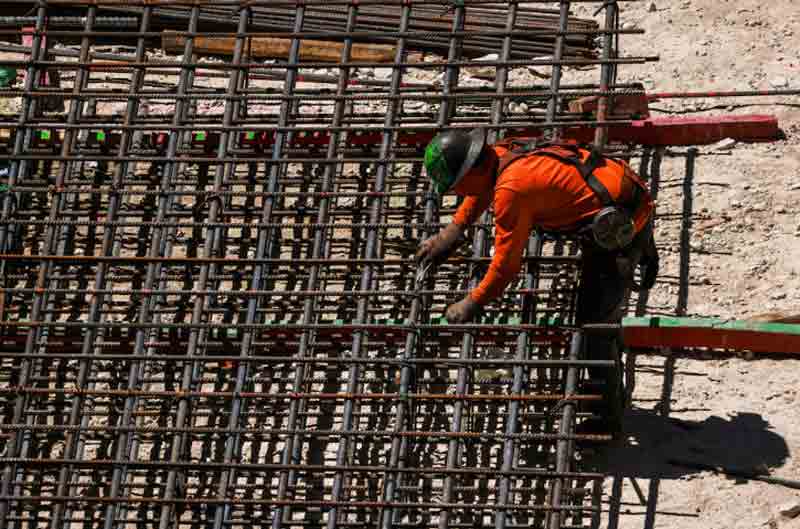Egypt is currently seeking alternative options for acquiring fifth-generation stealth fighters after facing significant pushback from Washington regarding its 2018 attempt to purchase 20 F-35 Lightning II jets manufactured in the U.S. During that year, under the Trump administration, Egypt received a verbal assurance from President Donald Trump for the acquisition of these advanced aircraft. However, strong opposition from the U.S. Department of Defense and Israel quickly derailed any chance of finalizing the deal.
In addition to Egypt, Trump also approved the sale of 100 F-35 jets to Türkiye and 50 to the United Arab Emirates during his first term. Following the setback with the F-35s, Egypt redirected its efforts towards Russia, beginning discussions to acquire 24 Su-35 fighters. This initiative also fell apart due to intense pressure from Washington, which threatened sanctions under the Countering America’s Adversaries Through Sanctions Act (CAATSA).
Major General Naser Salem, a former senior Egyptian military official, expressed Cairo’s frustration in remarks to Al-Monitor in 2020, questioning why the U.S. would not provide Egypt with F-35 fighters similar to those supplied to Israel, especially while opposing Cairo’s agreement with Moscow for Su-35 jets.
Two significant U.S. legislative measures have created substantial hurdles for Egypt in its pursuit of stealth fighter jets. The first, enacted in 2008, legally requires the maintenance of Israel’s Qualitative Military Edge (QME), which imposes strict limitations on the sale of advanced military technologies to countries in the Middle East. The second measure, the 2017 CAATSA law, imposes sanctions on nations acquiring defense equipment from countries classified as adversaries by the U.S. Consequently, Egypt’s efforts to secure fifth-generation aircraft from the U.S. are hindered by American obligations to maintain Israel’s military superiority, despite Egypt’s long-standing peace agreement with Israel. Defense analysts note that from Israel’s perspective, the F-35 represents a significant threat, as it could undermine Israel’s air dominance if relations between Egypt and Israel were to worsen. In light of U.S. restrictions, Egypt is reportedly shifting its focus to China to meet its needs for fifth-generation fighters.
Recent developments suggest that Cairo has shown interest in China’s FC-31 stealth fighter and its enhanced version, the J-35A, with discussions anticipated to occur in 2024. Last year, China officially unveiled the J-35A, a variant of the FC-31, during the Airshow China in Zhuhai. The J-35A, which is China’s second fifth-generation stealth aircraft following the J-20 “Mighty Dragon,” reflects Beijing’s increasing ambition to compete with the United States in advanced military aviation technology. Designed for both air superiority and ground attack missions, the J-35A positions China as only the second nation, alongside the United States, to develop two distinct fifth-generation stealth fighters.
The United States currently operates the F-35 and F-22 “Raptor” as its two primary fifth-generation fighter platforms. In contrast, Egypt appears to be advancing its military capabilities by integrating sophisticated Chinese military technology into its air force.
Recent information indicates that the Egyptian Air Force has likely received its first set of fourth-and-a-half generation J-10CE fighters from China, which are armed with PL-15 Beyond Visual Range (BVR) air-to-air missiles. Reports suggest that Egypt plans to acquire up to 40 J-10CE fighters, the export variant of the J-10C “Vigorous Dragon” manufactured by Chengdu Aircraft Corporation.
Israel’s defense community has expressed growing concern regarding Egypt’s expanding military capabilities, particularly with the introduction of J-10C fighters equipped with PL-15 missiles. Analysts in Israel warn that these advancements could significantly shift the aerial balance in the Middle East, which has historically been dominated by Israel.
The PL-15 missile, capable of reaching speeds of up to Mach 4 and featuring Active Electronically Scanned Array (AESA) radar, is reported to have an operational range exceeding 300 kilometers, positioning it among the longest-range air-to-air missiles currently available. According to the Israeli defense portal Nziv, Egypt’s pursuit of J-10C aircraft signifies a broader strategic effort to modernize its air force and reduce its dependency on U.S. military supplies.
Israeli apprehensions extend beyond the J-10C fighter to the specific integration of the advanced PL-15 missile, which could allow Egyptian aircraft to target adversaries at significantly increased ranges compared to previous capabilities.
Historically, Israel has maintained its air superiority in the region primarily through advanced American systems, particularly the F-35 fighter and AIM-120 AMRAAM missiles. However, the introduction of China’s PL-15 missile into Egypt’s military inventory could potentially challenge Israel’s established air dominance.
Outgoing Chief of Staff of the Israel Defense Forces (IDF), Lt. Gen. Herzi Halevi, has expressed significant concern regarding the rapid enhancement of Egypt’s military capabilities. In a recent interview with Channel 14, he characterized Egypt’s growing military strength, which includes advanced combat aircraft, submarines, warships, modern tanks, and a robust infantry, as “deeply troubling.”
While Egypt does not currently represent a direct threat, Halevi cautioned that the geopolitical landscape could change swiftly if there were a shift in Egypt’s political leadership. His remarks are consistent with recent Israeli intelligence evaluations indicating that Egyptian military activities in the Sinai Peninsula may already be in violation of the 1979 Camp David Accords.
Discover more from Defence Talks | Defense News Hub, Military Updates, Security Insights
Subscribe to get the latest posts sent to your email.





